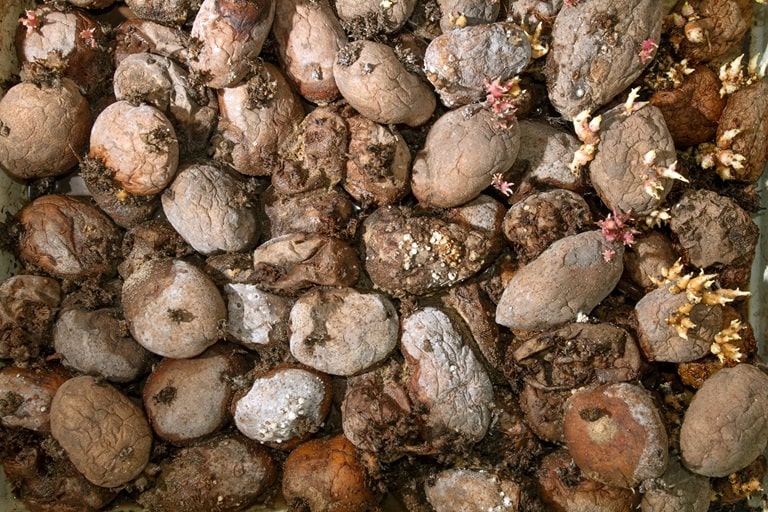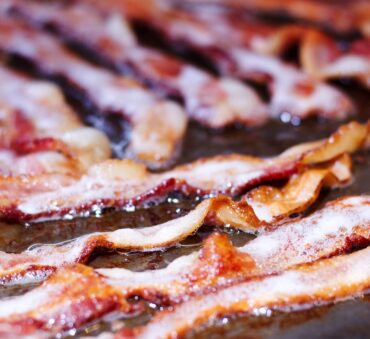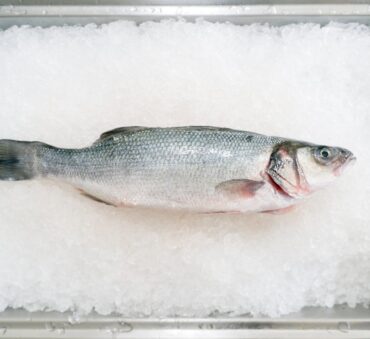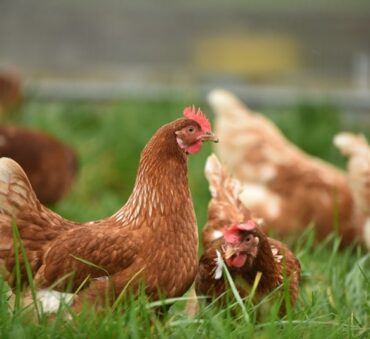The modern food manufacturing and packaging industry is a double-edged sword. On one hand, it has revolutionized how we access, preserve, and distribute food, bringing an era of abundance and convenience previously unimaginable. Supermarkets brim with a year-round supply of fresh produce, and advanced packaging techniques extend the shelf life of perishables, ensuring that food reaches our tables in prime condition.
Yet, on the other hand, as demand and production have soared, so has the amount of food waste. According to the USDA, an estimated 30-40% of the food supply is wasted, which equates to around 133 billion pounds and $161 billion worth of food each year.
These figures underscore not just the scale of food waste in America but also highlights the need for a more sustainable approach to how we produce, consume, and think about our food.
The Problem of Food Waste
When we ask, “Why is food waste a problem?” in the context of modern food manufacturing, we’re peeling back layers of a deeply complex issue. At its core, this isn’t just about the food items we toss out. It’s a story of resources – water, energy, labor – invested in products that never fulfill their purpose. It’s about the hard work of farmers, processors, and transporters, all going to waste. This inefficiency hits the economy hard, translating into billions of dollars lost annually, and it’s a poignant reflection of a disconnect in our food system.
Then, there’s the undeniable link between food waste and climate change. In landfills, these wasted foods release methane, a potent contributor to global warming. It’s a jarring thought: our daily food choices, right down to what we discard, are intricately tied to the health of our planet. This realization brings new weight to our decisions in kitchens and supermarkets, highlighting the need for more mindful consumption and innovative solutions in food manufacturing.
Key Takeaways:
- In America, 30-40% of the food supply is wasted annually, amounting to around 133 billion pounds and $161 billion worth of food. This highlights a critical need for more sustainable food consumption and production practices.
- The most wasted foods in the U.S. include milk, bread, potatoes, cheese, apples, lettuce, avocados, chicken, and bananas. Factors contributing to this waste range from misunderstanding expiration dates to over-purchasing and improper storage.
- Significant food waste occurs at various levels including households, the food service sector, retail outlets, and throughout the supply chain, each contributing to the overall problem due to different factors such as over-purchasing, aesthetic standards, and inefficiencies in distribution and storage.
- Key methods include optimizing consumption and shopping habits, standardizing food dating/labeling formats, storing food properly, improving food manufacturing processes, and embracing food recovery and donation programs.
- Upcycling food waste into new products, converting waste to energy through anaerobic digestion, composting, and repurposing safe food waste as animal feed are some of the effective ways to reduce waste and promote a circular economy.

Most Wasted Food in America
- Milk‘s journey from farm to fridge is one laden with challenges, often culminating in waste. In America, nearly 20% of milk produced finds its way down the drain. Why? A significant factor is the misunderstanding of expiration dates. Many consumers misinterpret ‘sell-by’ and ‘use-by’ dates as hard-and-fast indicators of spoilage, leading to premature disposal. Furthermore, milk’s perishable nature demands constant refrigeration, and any lapse in this can accelerate spoilage. Overpurchasing, driven by bulk buying tendencies and promotional sales, exacerbates the problem. People often buy more milk than they can realistically consume before it spoils, contributing to this wastage.
- Bread is the most wasted food type in the US. The staggering figure of 38% of all grain products wasted annually includes over 240 million slices of bread. The primary culprit? Its inherently short shelf life. Bread stales quickly, and mold growth can occur within days, particularly in humid conditions. Moreover, many households over-purchase bread, often lured by buy-one-get-one-free deals, leading to excess that cannot be consumed in time. Additionally, a cultural shift towards low-carb diets has also seen perfectly good bread being discarded more frequently.
- Potatoes, versatile and abundant, face a high rate of waste due to several factors. Overbuying is a common issue, as consumers often purchase items in bulk, leading to spoilage before they can be used. Aesthetic standards play a significant role too. Potatoes that don’t meet certain size or appearance criteria are often left unsold or discarded by retailers and consumers alike. Additionally, often potatoes are improperly stored, which leads to quicker spoilage.
- Cheese, with its myriad of types and flavors, is a frequent casualty in the war against food waste. The perishable nature of cheese, especially softer varieties, means it has a limited shelf-life post-purchase. Often, consumers buy large quantities, attracted by variety or bulk discounts, only to find that they can’t consume it all before it spoils. In addition, the nuanced understanding required for storing different types of cheese – from hard cheddars to soft bries – often leads to improper storage, hastening spoilage.
- Despite their popularity, apples are among the most wasted fruits. One of the key reasons is their perceived imperfection. Many apples are discarded for not meeting the cosmetic standards set by retailers and consumers – they might be too small, too large, or oddly shaped, yet still perfectly edible. Additionally, the over-purchasing of apples, especially during peak season, leads to more than can be consumed. Apples, when not stored correctly, can also spoil rapidly.
- Lettuce is particularly prone to waste due to its highly perishable nature. It has a very short shelf life, and once it wilts or browns, it is often deemed inedible and discarded. The delicate nature of lettuce leaves makes them susceptible to damage during transport and handling, contributing to waste even before purchase. Additionally, the trend of buying pre-washed and packaged lettuce often leads to buying more than needed, increasing the likelihood of waste.
- Avocados have gained immense popularity but are tricky when it comes to consumption timing. Their ripening process is rapid and often unpredictable, leading to a narrow window when they are at the perfect stage of ripeness. Many avocados are thrown away because they have either ripened too fast or have been forgotten until past their prime. Additionally, avocados are often bought in multiples, and not all of them are used before they spoil.
- Chicken, one of the most popular protein staples, is frequently wasted due to several reasons. One major issue is over-purchasing, particularly when it’s on sale, leading to more than can be consumed or stored appropriately. Misinterpretation of expiration dates also leads to premature disposal. Furthermore, improper storage or defrosting methods can cause the chicken to spoil or become a health risk, necessitating its disposal.
- Bananas are often bought in bunches, which can lead to waste when they ripen simultaneously and more quickly than they can be consumed. Many bananas are discarded simply because they have developed brown spots, despite being perfectly edible and actually sweeter at this stage. The misunderstanding of their ripening process and the lack of knowledge about how to store them to extend their shelf life contribute to their high waste rate.

Major sources of Food Waste in America
Households
In the intimate setting of our homes, we find one of the largest sources of food waste. Here, the main culprits of household food waste are overpurchasing, improper storage, and a lack of creativity in using leftovers. Many of us are guilty of buying more than we need, lured by sales or bulk-buy deals, only to find perishables spoiling before we can use them. Additionally, confusion over ‘best before’ and ‘use by’ dates often leads to premature disposal of food that’s still safe to eat.
Food Service Sector
Food waste in restaurants and cafeterias is driven by factors like oversized portions and strict aesthetic standards. Large servings often result in diners leaving food on their plates, which then contributes to waste. The sector’s emphasis on the visual appeal of dishes also means that ingredients that don’t meet these high standards are often discarded, despite being completely edible.
Retail Outlets
Grocery store food waste also plays a significant role in the cycle of waste. Overstocking, aimed at creating an image of abundance, leads to the spoilage of perishables. Furthermore, the pursuit of perfection in produce appearance means many fruits and vegetables are rejected for minor blemishes or irregular sizes, despite being perfectly edible.
Supply Chain
Beyond these visible sectors, the supply chain itself, stretching from farms to retail outlets, experiences significant food loss. Inefficiencies such as suboptimal harvesting techniques, transportation challenges, and inadequate storage contribute to this less visible but equally important aspect of food waste.
How to Reduce Food Waste
Optimizing Consumption and Shopping Habits
A pivotal step is optimizing our consumption and shopping habits. This involves planning meals ahead, buying only what we need, and being mindful of perishables. Consumers can embrace practices like shopping with a list to avoid impulse buys and using leftovers creatively to minimize waste. This conscious approach to food consumption can significantly reduce household food waste.
Standardizing Food Dating/Labeling Formats
As mentioned before, confusion around food expiration dates is a major cause of waste. Standardizing food dating and labeling formats across the US can play a crucial role in reducing this confusion. A more uniform system would help consumers understand when food is no longer safe to eat, as opposed to simply not at its peak quality. This clarity can prevent the premature disposal of still-edible food.
Storing Food Properly
Proper food storage is essential to extending the shelf life of perishables. This includes understanding which foods should be refrigerated, which should be kept at room temperature, and the best ways to store different types of produce. For instance, keeping fruits and vegetables in separate drawers in the fridge can reduce premature spoilage. Educating consumers on these best practices can make a considerable difference.
Improving Food Manufacturing Processes
On the production side, improving food manufacturing processes can reduce waste significantly. This includes optimizing portion sizes, using more of each ingredient, and finding uses for food parts typically discarded. Manufacturers can also invest in better preservation technologies to extend the shelf life of their products.
Embracing Food Recovery and Donation Programs
The US has several food recovery and donation programs that play a vital role in reducing food waste. Organizations like Feeding America work with retailers, manufacturers, and farmers to rescue surplus food and distribute it to those in need. This not only addresses waste but also helps alleviate food insecurity.
Following Food Safety and Waste Reduction Regulations
US agencies like the Food and Drug Administration (FDA) and the United States Department of Agriculture (USDA) are instrumental in food safety and waste reduction. They provide guidelines and regulations on food handling, storage, and distribution, which, if adhered to, can significantly cut down on food waste.

Solutions to Food Waste in America
The concept of upcycling food waste is gaining traction. This approach involves creating new, value-added products from food waste. From snacks made from imperfect produce to extracting useful ingredients for other applications, upcycling not only minimizes waste but also fosters a circular economy where every part of food is valued and utilized. Let’s explore the primary methods for managing food waste effectively:
Converting Food Waste to Energy
Turning food waste into energy is a practical solution. This process, known as anaerobic digestion, breaks down organic material in a controlled, oxygen-free environment to produce biogas. This biogas can be used as a renewable energy source for generating electricity or heating, offering a dual benefit of waste reduction and energy production.
Composting Food Waste
Composting offers a straightforward yet effective way to handle food waste. By converting food waste into compost, we convert it into nutrient-rich soil, perfect for enhancing gardens and agricultural land. This method not only diverts waste from landfills but also turns it into a valuable resource for growing future crops.
Utilizing Food Waste as Animal Feed
Repurposing food waste into animal feed is an efficient use of resources. This method involves transforming safe and suitable food waste into feed for livestock. It reduces landfill waste and lessens the demand for new animal feed production, making it a sustainable choice.
Conclusion
It’s clear that the path to reducing food waste is complex yet achievable. Awareness and action at every level, from individual choices to broader industry practices, are key to making a difference.
At Shapiro, we stand committed to effective food waste management. Our nationwide network of skilled partners allows us to offer specialized recycle food waste services tailored to meet the specific needs of our clients. From innovative recycling and composting solutions to efficient collection and processing systems, we provide a comprehensive approach to managing food waste.
Contact us to find out more.
FAQs
The history of food waste in America dates back to the late 19th century and early 20th century when rapid urbanization and industrialization changed how food was produced, distributed, and consumed. Post-World War II, the advent of processed foods and a culture of abundance led to increased waste. By the late 20th and early 21st centuries, awareness about food waste grew, but so did the levels of waste due to consumer habits and inefficiencies in the food supply chain.
America wastes a lot of food due to a combination of factors, including consumer behavior (like overpurchasing and discarding foods based on cosmetic standards), inefficiencies in the food supply chain, lack of awareness about food preservation, and confusing food date labeling. Additionally, the culture of abundance and large portion sizes in food service contributes to this issue.
On average, an American household wastes about 32% of its food, equating to around $1,866 worth of food annually. This figure includes food discarded due to spoilage, over-purchasing, and uneaten leftovers.
Approximately 150,000 tons of food are wasted every day in America.
Annually, America wastes an estimated 133 billion pounds of food. This is about 30-40% of the entire US food supply, equating to a monetary value of nearly $161 billion.
Household waste contributes the most to food waste in America. Misunderstanding of food labels, over-purchasing, improper storage, and large portion sizes are key factors. Additionally, food service and retail sectors contribute significantly due to factors like overstocking and stringent aesthetic standards for produce.
In America, the most wasted foods include bread, milk, potatoes, and fruits like apples and bananas. In comparison, other countries may have different patterns due to dietary preferences and cultural practices. For instance, in many European countries, bread and fruits are also commonly wasted, whereas in Asian countries, rice and vegetables might be more prone to waste.



